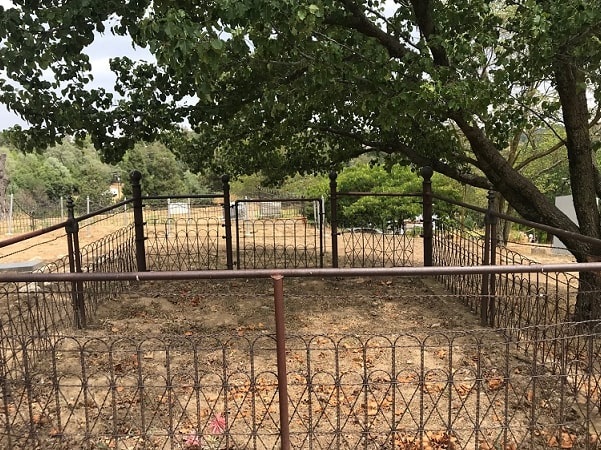Introduction: In this article, Gena Philibert-Ortega gives tips for when you’re researching an ancestor’s burial site but cannot find a gravestone. Gena is a genealogist and author of the book “From the Family Kitchen.”
Have you found the burial place, or think you know the burial place, for an ancestor – only to discover there is no gravestone? This can happen for any number of reasons, and there is no doubt that it is frustrating for family historians looking to confirm information about their ancestors.

So, what do you do when you can’t find a marker for an ancestor? When do you call off the search because you’ve “looked everywhere”?
Why Is There No Marker?
Before we explore why an ancestor may not have a grave marker, let’s briefly discuss why you may not find a burial for them. There are various reasons why an ancestor is not found in a location or cemetery you expect to find them. For example:
- That cemetery doesn’t exist anymore.
- The deceased died in an institution.
- The deceased was cremated.
- The person died in a place where their body was not recovered or they were buried where they died (for example, at sea or on an emigrant trail).
- They died as an “unknown” because their body was not identified.
Knowing the reasons why a burial might not be found can help as you search, and it may explain why you can’t find the marker. Now, assuming you think you know where they were buried due to a genealogically relevant record or family lore, what are the reasons their grave may not be marked? Let me preface this with the point that even if a death certificate says a person was buried in a particular cemetery, it doesn’t mean it’s correct. I’ve seen death certificates that gave the wrong information about the final resting place of the deceased.
- Marker was destroyed over time (wear from weather, sinking into grave, breaks into pieces, wooden marker).
- Marker is no longer readable.
- Marker was stolen.
- Grave was never marked.
- Grave was marked with a temporary marker and never replaced (paper or small metal marker).
- Grave was never marked because person was buried in a mass grave, potter’s field, or an institution.
- Marker was removed by a government entity (this happens when graves are moved for land use or other reasons).
- Cemetery and/or marker is on private property.
If you’ve visited the cemetery, it might be obvious where a marker once was. Maybe there’s a family plot or there are the remnants of a stone, or there is a fence or other type of border where there are unmarked burials. But over time, the elements, weather, “progress,” good intentions, or maleficence can result in an unmarked grave.
Now What?
So, what do you do if you’re pretty sure your ancestor is in a particular cemetery but the burial is not marked?
You’ll want to exhaust everything you can to determine if the ancestor is buried there. This can mean exploring:
- Historical newspapers for articles (including an obituary or articles about the cemetery).
- Cemetery records.
- Funeral home records.
- Family sources, including receipts for burial and endowment care. Photos of funeral, burial, or gravestone. Diaries, journals, correspondence, and funeral cards.
- Local and cemetery histories (a local history might shed light on the cemetery and its burials).
- Cemetery transcriptions. Earlier transcriptions and lists may be a clue to a marker that was stolen or has deteriorated over time. The FamilySearch Catalog is a great place to look for these.
The Works Progress Administration’s Historical Records Survey created cemetery indexes in the 1930s as part of the New Deal. These cemetery indexes can be found in libraries and online. You can read more about these on the Interment.net website.
Finding the burial may take a lot of research in online and in-person sources, and unfortunately the answer may be that you never find the answer. In my own family history, I have ancestors whose burials are now underwater due to local projects, ancestors who are buried underneath a golf course, ancestors who were laid to rest (presumably) on their homestead land that is now private property and overrun with trees. There’s also the ancestor for whom I know what cemetery she is buried in but the stone is no longer there (if it ever existed). A fire in the early 1900s destroyed the records and I would need to scour miles of a large cemetery to find her (and still may not). Unfortunately, sometimes there is no answer.
Sometimes There Is No Answer but We Still Try
In genealogy we do our best to connect parents to children and uncover the facts of our ancestors, but sometimes we are left with even more questions. In some cases, the best you can do is an exhaustive search and then write up what you know and don’t know. In time an answer might surface but, in some cases, you will not know some important details about every ancestor in your family tree.
Related Articles:
